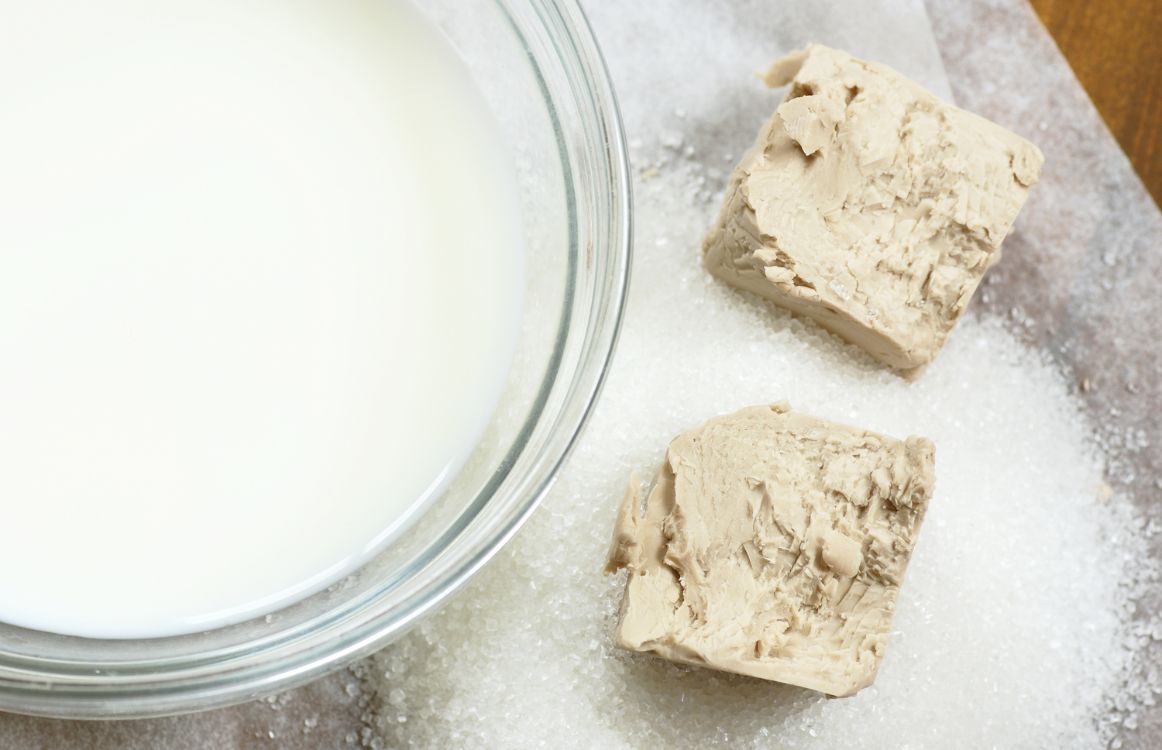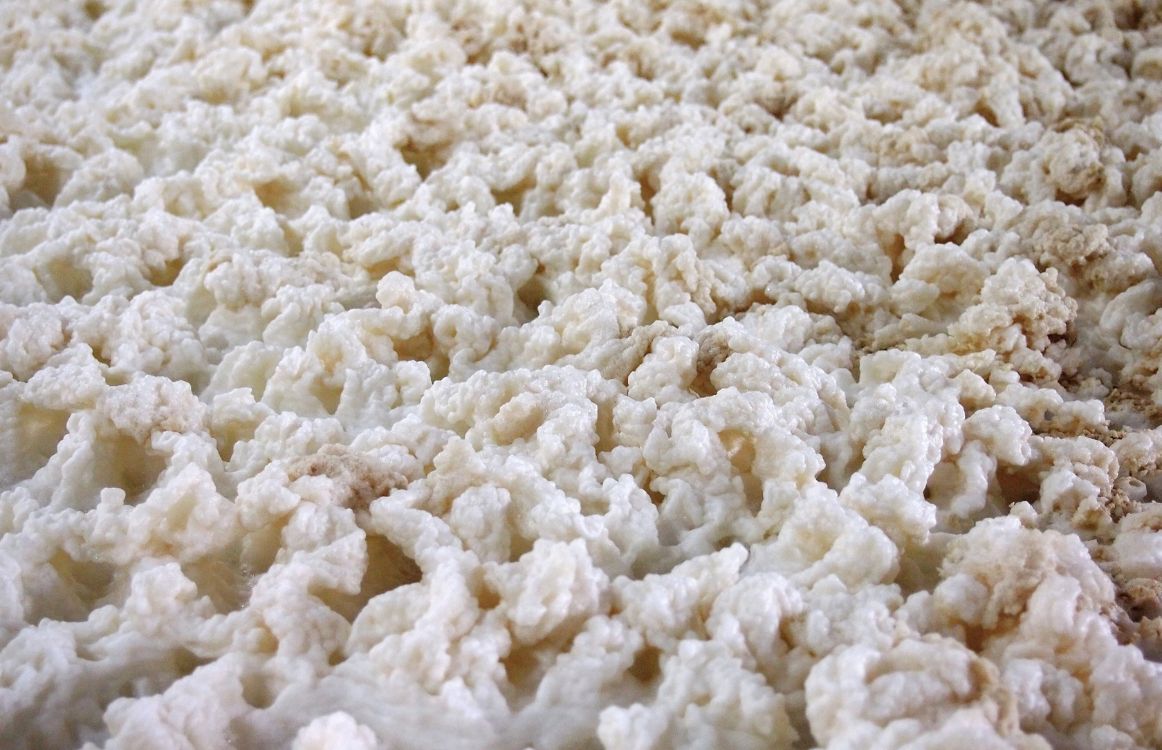Can Yeast Ferment without Sugar?

In the brewing and wine making industries, this question comes up a lot, “can yeast ferment without sugar?” After all, these industries are rich with experimentation of flavors and aromas, and yeast plays a large role in those elements of beer, wine, bread making, and everything else in which it has a hand. So, it’s worth discussing the role of yeast here, the role it has in fermentation, and its relationship to sugar.
Yeast
Yeast is a single-celled eukaryotic living organism that has been around since virtually the beginning of life on earth.
The theory goes that bacteria came first, as a prokaryotic organism, consuming energy from the sun and growing as plant life grew.
Yeast share elements of life with both bacteria and fungi.
The difference between yeast and bacteria is the eukaryotic versus prokaryotic factor.
Eukaryotic means the organism has an enclosed nucleus, where prokaryotic means the organism does not have an enclosed nucleus. Yeast is also much larger than bacteria, though there is more bacteria on earth, so bacteria takes up more space.
In terms of the evolutionary process, it seems yeast evolved from bacteria as a sort of fungi in order to compete for food. Perhaps something about the prokaryotic nature of yeast makes it more competitive and gives it some advantages over bacteria.
In any event, this split took place billions of years ago, as life was just beginning on earth, and it has held for all this time.
Since that time, as far as we know, yeast has had as it sole source of food one single chemical in nature – sugar.
Yeast lives in search of sugar for energy. As one of the simplest forms of life, it exists to utilize as little energy as possible to find sugar, consume it, and excrete it.
It will lie dormant until it sense sugar in its presence, at which point it will come alive and do the minimal work necessary to feed and waste.
Fermentation
We have come to think of this natural process as fermentation.
The word fermentation literally means the chemical change undergone from one element to another. It is kind of like alchemy if you think about it.
There exist in nature two types of fermentation: aerobic and anaerobic — or in the presence of or absence of oxygen.
The human body undergoes anaerobic fermentation when we run out of breath while exercising. The body naturally produces ATP from the carbohydrates in our body, but it’s a process that is relatively slow and we have plenty of stores.
When we exercise, we run out of those stores and the process needs to be quick to get us the energy we need to run, dance, climb mountains – you name it. When we run out, our cells basically undergo fermentation and produce that ATP quickly, getting us the energy we need to keep going.
When we run out of breath entirely, we pass out. This literal exhaustion occurs because our resources are tapped, and our body cannot keep producing the ATP we need for energy.
Of course, the other type of fermentation, the type with which most of us are familiar, is alcoholic fermentation.
Because sugar is the sole food source for yeast, when yeast is added to a batch of wort or must, the yeast gets right to work consuming the sugars in those liquids. The yeast cells use those sugars for energy and then expel water, alcohol, and carbon dioxide as waste products.
It is very similar to what humans experience when we eat food for energy and then defecate what our bodies consider waste.
It just so happens that we benefit from the waste of yeast in the form of beer, wine, liquor, bread, kombucha, and other fermented foods and beverages.

Can You Ferment Yeast without Sugar?
So, when you understand the evolution of yeast and the way alcoholic fermentation works, you can see that you don’t ferment yeast.
Yeast ferment sugar. And only sugar.
Yeast require sugar to survive, and alcoholic fermentation is just a happy coincidence that takes place as a result of yeast consuming sugar.
You cannot trick this super simple organism into producing alcohol from anything other than sugar.
Alternatives to Sugar
The good news is that “sugar” refers to the saccharides in foods, not necessarily what we typically consider sugar.
Obviously, fruits like grapes for wine and apples and pears for cider are rich with sugars. But starches and grains also have tons of sugars for yeast to feed on. Even grains, which have more complex sugars, can be broken down and consumed. While yeast might have to work harder to ferment these sugars, they will get the job done. They may just produce less alcohol, like in the case of bread.
Yeast will use the sugars in fruits, vegetables, starches, grains, and honey and other syrups to ferment and produce alcohol.
This fermentation takes place in nature without any interference from nature; alcoholic fermentation was occurring naturally on fruits and vegetables long before humans came along. We merely discovered it in nature and learned to work with it to our advantage.
The Purpose of Sugar Alternatives
Now, none of this is to say that we don’t ever want to use sugar alternatives like xylitol, Stevia, or Splenda in our fermented products.
Quite often, if brewers or wine makers want a sweeter product, the way to get there is with a sugar alternative specifically because if you try to add more of what is called a fermentable sugar, you will continue the fermentation process, resulting in a still drier product, not a sweeter one.
Because as yeast senses the presence of a new fermentable sugar, it will immediately begin the process of consuming and fermenting.
However, if you do want to add sweetness, you can use an artificial sweetener, safe in the knowledge that yeast will never ferment it.
Cheers!
Are you still pitching fresh yeast every time? By reusing your yeast, you can save up to hundreds of thousands of dollars per year on just yeast alone!
Join the hundreds of brewers and vintners from all around the world using the Smartest Automated Yeast Cell Counter! Request a Free Demo Account today and experience firsthand how Oculyze can take your brewery or winery to the next level!


